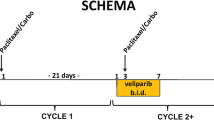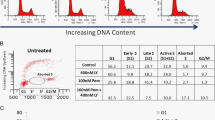Abstract
Purpose. We have recently identified a deoxycytidine nucleoside analogue, troxacitabine (β-L-dioxolane cytidine, Troxatyl; Shire BioChem), which has potent antitumor activity against both leukemia and solid tumors. In contrast to the cytidine nucleoside analogues currently in clinical use (cytarabine and gemcitabine), troxacitabine is a poor substrate of nucleoside transporters and enters cells primarily by passive diffusion. This unusual property led us to evaluate the efficacy of troxacitabine in multidrug resistant (MDR) and multidrug resistance-associated protein (MRP) tumors.
Methods. The in vitro antiproliferative activity of troxacitabine was investigated in the human nasopharyngeal epidermoid carcinoma cell line, KB, and its vincristine-resistant derivative (KBV), as well as in human leukemia cell lines of myeloid and lymphoblastoid origin, HL60 and CCRF-CEM, respectively, and their MDR (HL60/R10 and CCRF-CEM/VLB) and MRP (HL60/ADR) derivatives, using the thymidine incorporation assay. For in vivo studies, we compared the antitumor efficacy of troxacitabine with that of doxorubicin and vinblastine in xenograft models of these solid and hematological human anthracycline-resistant tumor xenografts.
Results. Troxacitabine demonstrated potent antiproliferative activity against both P-glycoprotein-positive (KBV, HL60/R10, CCRF-CEM/VLB) and P-glycoprotein-negative (HL60/ADR) multidrug-resistant cell lines with IC50 values ranging from 7 to 171 nM. Tumor regression was observed in the KBV xenograft following a 5-day treatment with 20, 50 and 100 mg/kg of troxacitabine, with percent total growth inhibition (TGI) of 81, 96 and 97, respectively, and some cures at the two highest dose levels. In the HL60, HL60/R10, HL60/ADR and CCRF-CEM/VLB xenografts, the effect of troxacitabine was evaluated on survival time. In the HL60 promyelocytic human xenograft models, troxacitabine treatment (25, 50 and 100 mg/kg per day for 5 days) was initiated 10 days after tumor cell inoculation, once animals had developed disseminated tumors. In all three promyelocytic leukemia xenografts, troxacitabine was quite potent, producing T/C values of 162% to 315% as well as complete cures at the higher dose levels. In the CCRF-CEM/VLB T-lymphoblastoid leukemia xenograft, troxacitabine treatment (10, 30 or 250 mg/kg total doses using different schedules) was initiated 20 days after tumor cell inoculation. Troxacitabine was not as potent in this model but did result in significant antileukemic activity (T/C of 131%) when administered at 10 mg/kg on days 20, 27 and 34.
Conclusions. These results indicate that troxacitabine has a potent in vivo antitumor activity associated with tumor regressions and complete cures in animals with tumors refractory to current chemotherapeutic agents.
Similar content being viewed by others
Author information
Authors and Affiliations
Additional information
Electronic Publication
Rights and permissions
About this article
Cite this article
Gourdeau, H., Genne, P., Kadhim, S. et al. Antitumor activity of troxacitabine (Troxatyl) against anthracycline-resistant human xenografts. Cancer Chemother Pharmacol 50, 490–496 (2002). https://doi.org/10.1007/s00280-002-0530-7
Received:
Accepted:
Issue Date:
DOI: https://doi.org/10.1007/s00280-002-0530-7




